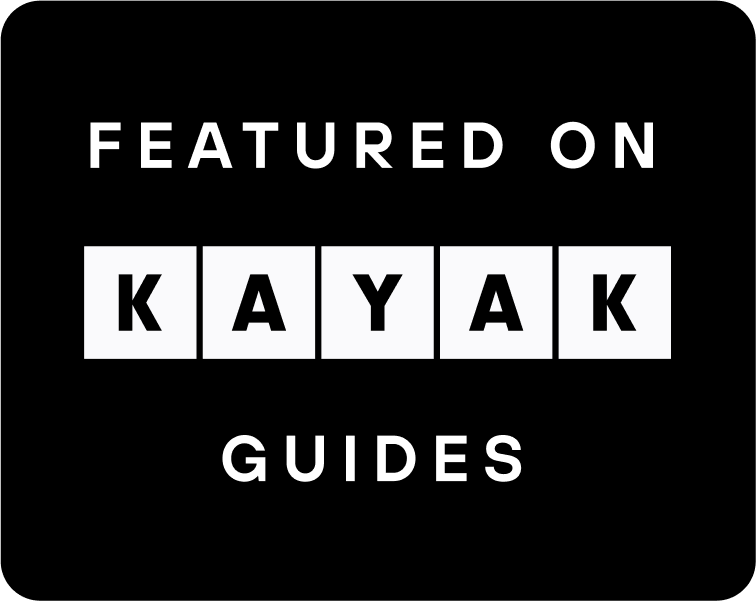Looking & Seeing
one long look at one work of art
John O'Hern is an arts writer, curator and retired museum director who is providing a weekly contemplation of a single work of art from our gallery. In our fast-paced lives overflowing with information, we find it necessary and satisfying to slow down and take time to look. We hope you enjoy this perspective from John.
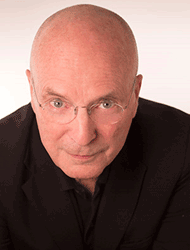
John O'Hern has been a writer for the 5 magazines of International Artist Publishing for nearly 20 years. He retired from a 35-year-long career in museum management and curation which began at the Albright-Knox Art Gallery where he was in charge of publications and public relations and concluded at the Arnot Art Museum where he was executive director and curator. At the Arnot Art Museum he curated the groundbreaking biennial exhibitions Re-presenting Representation. John was chair of the Visual Artists Panel of the New York State Council on the Arts and has written essays for international galleries and museums.
October 13, 2024
KRISTINE POOLE | Duende
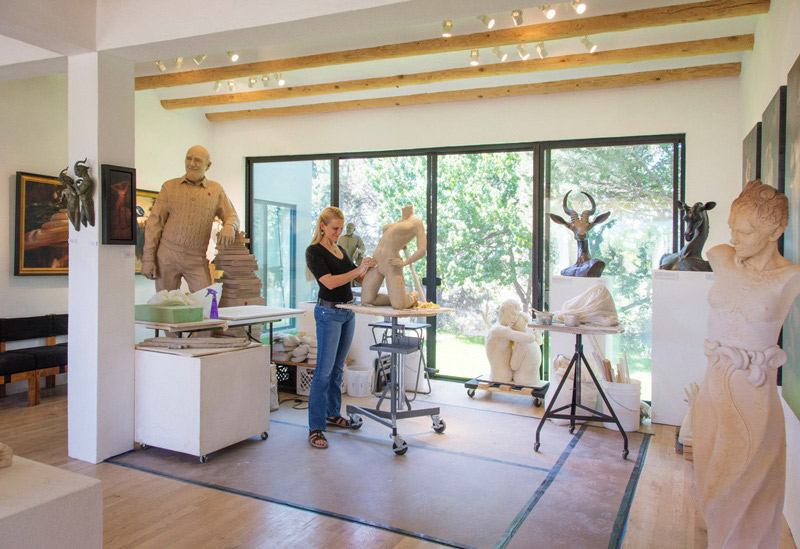
Kristine Poole’s mother saved a paper she wrote when she was 9 and in the fourth grade. I’ve always found that fourth graders are full of curiosity and willing to express their ideas, not caring what their peers think. The fourth grader, Kristine, kept that curiosity and confidence, and exhibits it in her sculpture today.
“I wrote that I wanted to be a professional artist,” she relates. “I wanted to know what that was like. I was also concerned about saving animals. We had tons of animals as kids—dogs and cats and birds and hamsters. The third thing was I wanted to know why there was war—why humankind thought they had to do that, what the purpose of it was—although my generation grew up in probably the most peaceful time ever in human history.
“I think there’s a thread that goes through your life. I think most of us forget what we thought about as a child, that kind of very simple thinking. We get involved in school and learning and doing other things. I think my concern with the relationship between humans and animals has been part of me forever. I think it was a natural occurrence that it would start to show up in my work. Hopefully it will continue.
“I grew up in a very religious, fundamentalist family. We were not allowed to dance or wear makeup or earrings or drink alcohol. I’ve been thinking about that early resistance in my life and thought of a quote from Henry Ford who wrote, “When everything seems to be going against you, remember that the airplane takes off against the wind, not with it.
“When I was in high school, I was always drawing dancers because I thought they were such beautiful creatures, the way they moved. I had done a picture of a beautiful dancer, and I was in a dark hallway, kind of peeking around, looking.
“I think it was the beginning of a lifelong fascination with the human form and what the human form can do and how we express ourselves with it. Dance is all about body language. Body language is universally powerful. It communicates across cultures, often impacting us with a visceral intensity we find hard to explain. Verbal and written communication on the other hand, have the potential to express subtle nuances of thought and ideas. In skilled hands, words can shift perspectives, create realities and change the course of civilizations.
“In school, I also made little busts of people. I think we had a reasonable art program in the public school I went to. I was pretty shy and I think the way that I always processed the world was different. The way I experience things is very 3-dimensional. I always found the linear nature of words challenging to a point where it was difficult. To take all of your thoughts and distill them into a linear sentence is a bit of a miracle.
“Following my passion in life, my path has swerved all over the place. But I've never questioned that if I felt a fascination towards something, I would go and do it. I remembered that J.R.R. Tolkien said, ‘Not all those who wander are lost.’”
Kristine went on to college and received her BFA (summa cum laude) in ceramic sculpture from Northern Michigan University. “My senior exhibit statement was all about questions,” she relates. “Most of the time, I would think of somebody graduating with a degree in art as thinking they had solved a certain amount of things. Everything I had to say was about questions. I think my path has been more about following where these questions lead.”
Her imagined difficulty with linear thinking has not got in the way of her reading and using language—even incorporating words into (or onto) her sculpture—and remembering the highlights of what she has read and incorporating the ideas into her life and her work.
She even reminded me of a statement I had written in an essay for Decadence, an exhibition I had curated for Evoke in 2011. Kathrine and I had wrestled (figuratively) with the title and what it meant. I eventually decided, “Perhaps decadence is simply romping with abandon through the vastness of life.” Kristine took that to heart as supporting her passion for her life and her work.
Along the way, she discovered ballroom dancing, learning how the body moves and more about “body language”. Dance became one of those passions she followed and, in the process, she met Colin Poole whom she would marry and with whom she often collaborates making sculpture. Before Kristine and I retired to the patio of their home studio and gallery to talk about her work, Colin whipped up delicious crumpets for a treat. I topped mine with apricot/citrus preserves made from an apricot tree in their garden.
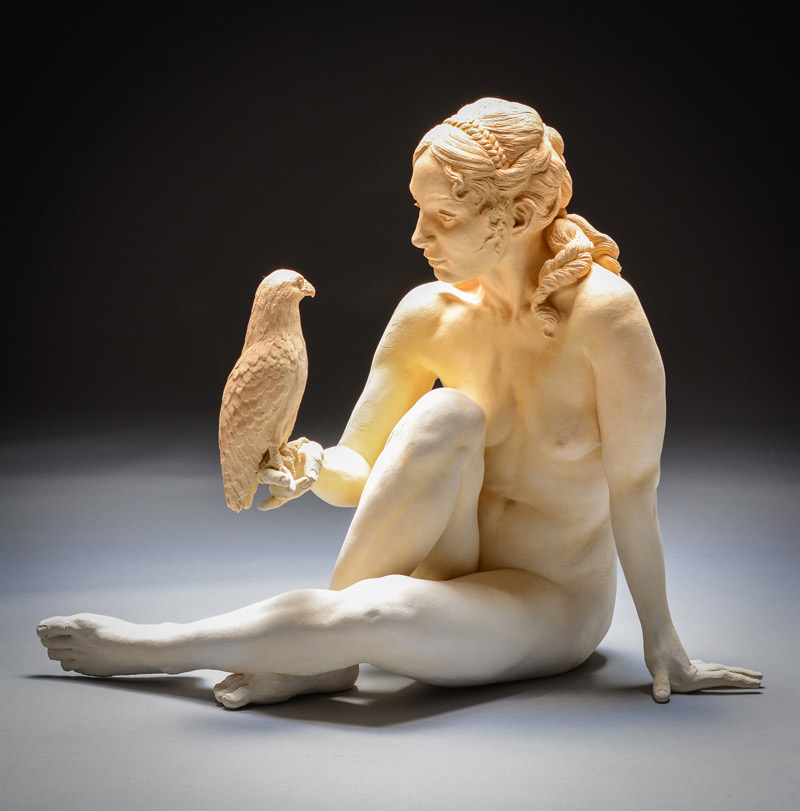 Our conversation focused on her sculpture Duende. She has written, "Duende is a quality of passion and inspiration. This sculpture is about following your passion in life, represented by the bird, a Brahminy Kite. The design work on the bird's chest flows onto the woman's arm and continues across her back, highlighting the connection and communication between them. It also embodies the blossoming that occurs when passion is your guide through life.
Our conversation focused on her sculpture Duende. She has written, "Duende is a quality of passion and inspiration. This sculpture is about following your passion in life, represented by the bird, a Brahminy Kite. The design work on the bird's chest flows onto the woman's arm and continues across her back, highlighting the connection and communication between them. It also embodies the blossoming that occurs when passion is your guide through life.
“The Brahminy Kite is often associated with Garuda, a powerful Hindu protector having the power to fly anywhere. The word Garuda has its origins in the verb "gri" - to speak. An important aspect of being guided by passion and inspiration is the ability to speak to yourself and others what is true for you. This opens the door to the unique path that is yours alone to wander.
“Adding another level of meaning, her right hand that the Kite rests on is in the "Palli Mudra" --a hand symbol that represents listening to your inner voice and having confidence in yourself.”
She has also written, “Some of the imagery in my work is based specifically in allegory, incorporating body language and symbols that hint at stories for the viewer to imagine. Other works integrate figures with text that highlight the inherent narrative qualities of the human form.”
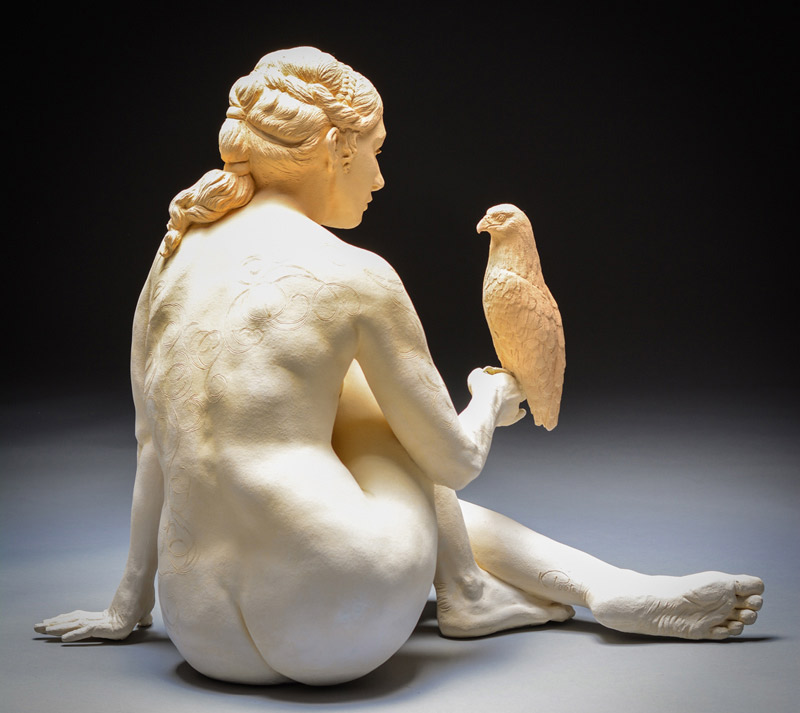 Her sculptures effortlessly contain and elicit meanings that belie the arduous task of constructing them. Working with live models and photographs, she models arms, legs and torsos from slabs of clay that she then assembles into the final form, defining the tension and relaxation of the muscles and adding details as she progresses.
Her sculptures effortlessly contain and elicit meanings that belie the arduous task of constructing them. Working with live models and photographs, she models arms, legs and torsos from slabs of clay that she then assembles into the final form, defining the tension and relaxation of the muscles and adding details as she progresses.
“To build the bigger sculpture,” she explains, “if you built it solid, you'd be working with 500 pounds of clay and that involves designing and making big armatures. So I rolled slabs. If you think of the human form as simple geometry, a calf would be a tapered cylinder, the arm is a tapered cylinder. The torso is basically 2 tapered triangles. So, I picture the human body that way. I roll the slab into the form and I attach it. I can get my hand inside and push. If you think of the thigh, I can push the quads out, the hamstrings and the adductors, to create the rough shape.” She acknowledges, “In terms of process, clay doesn't like to do any of this, so you see these braces all over. If they weren't here, the sculpture would collapse. Once it's been fired, it will stay.”
Often, she incorporates text on her figures and had thought she would continue to do that in Duende. When she had incised the design that continues from the body of the kite to the woman’s back, she realized “I actually preferred the subtlety of that.” The symbolism of the Brahminy Kite remains despite her having reduced its relative size to suit the artistic proportions of the sculpture.
The sculpture speaks to me of the interrelatedness or the oneness of animal life and life in general—the oneness of all creation.
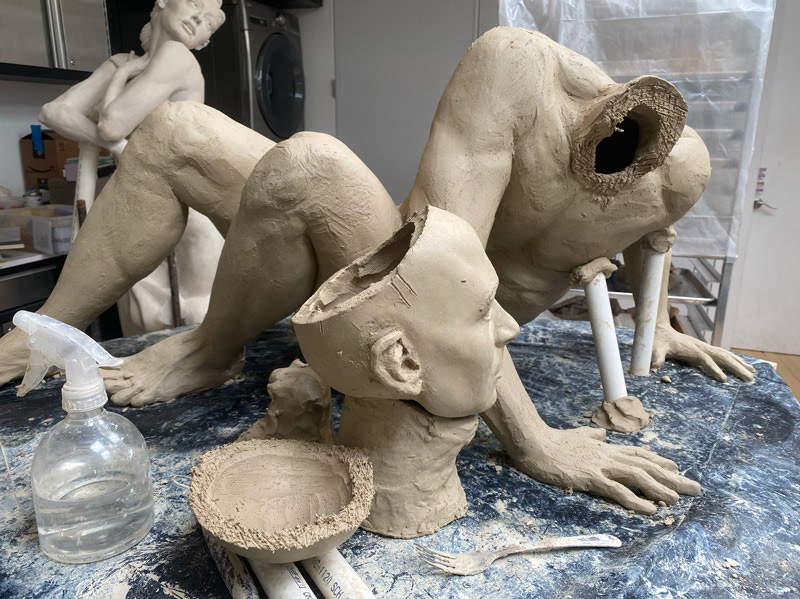 “Obviously my life has been about being a creative person and I think creativity is fundamental to humanity,” she says. “I think it gets beaten out of us in school--creativity and imagination. I’ve thought about figuring out a way for people to be able to experience creativity, whether they're actually making things themselves or experiencing it through what they see on social media or whatever else they experience. I think that can change the world. I believe that. It might be wishful thinking, but I think that if people actually got to experience the fulfillment of creativity, they would be happier. It changes the way that you see the world. It changes the way that you see people. It changes your excitement, your inspiration to get up every day.
“Obviously my life has been about being a creative person and I think creativity is fundamental to humanity,” she says. “I think it gets beaten out of us in school--creativity and imagination. I’ve thought about figuring out a way for people to be able to experience creativity, whether they're actually making things themselves or experiencing it through what they see on social media or whatever else they experience. I think that can change the world. I believe that. It might be wishful thinking, but I think that if people actually got to experience the fulfillment of creativity, they would be happier. It changes the way that you see the world. It changes the way that you see people. It changes your excitement, your inspiration to get up every day.
“I could do all of this and just keep it to myself, but I think there's an element of putting it out there and creating a connection with other people--maybe creating a moment of curiosity or a moment of understanding for other people that then circles around and brings fulfillment to your life. Fulfillment comes from sharing with others.”

